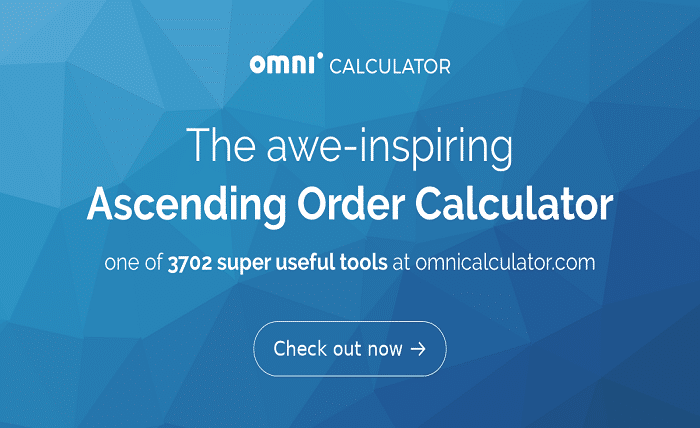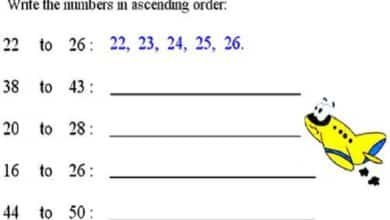Ascending Order Calculator: A Comprehensive Guide to Sorting Your Data

What is an Ascending Order Calculator?
An ascending order calculator is a tool designed to organize data in increasing order. Whether you are dealing with numbers, dates, or text, this tool simplifies the process of sorting your data from the smallest to the largest value. This functionality is crucial in data analysis, making it easier to interpret and draw meaningful conclusions.
How Does an Ascending Order Calculator Work?
An ascending order calculator works by taking a list of items and rearranging them in ascending order. This process involves comparing each element with the others and swapping their positions to achieve the correct order. The tool utilizes algorithms, such as bubble sort, quicksort, or mergesort, to efficiently sort the data. These algorithms ensure that the data is organized in the shortest possible time, making the calculator a powerful tool for data management.
Benefits of Using an Ascending Order Calculator
Using an ascending order calculator offers numerous benefits:
- Time-Saving: Automates the sorting process, saving valuable time.
- Accuracy: Reduces the chances of errors that can occur during manual sorting.
- Efficiency: Handles large datasets swiftly and accurately.
- User-Friendly: Simple to use, even for those with limited technical skills.
Applications of an Ascending Order Calculator
An ascending order calculator is versatile and can be applied in various fields:
- Academic Research: Sorting research data for analysis and interpretation.
- Business Analytics: Organizing sales figures, inventory data, or customer information.
- Education: Helping students understand sorting algorithms and data organization.
- Everyday Use: Managing personal data like lists of expenses, shopping lists, or schedules.
Online vs. Offline Ascending Order Calculators
Both online and offline versions of ascending order calculators are available. Online calculators are accessible from any device with an internet connection, making them convenient for on-the-go use. Offline calculators, on the other hand, can be used without internet access and are often integrated into spreadsheet software like Excel or Google Sheets.
How to Use an Ascending Order Calculator
Using an ascending order calculator is straightforward:
- Input Data: Enter the data you wish to sort into the calculator.
- Select Sorting Option: Choose ascending order as your sorting preference.
- Execute: Run the calculator to sort your data.
- Review Results: Check the sorted data for accuracy and use it as needed.
Choosing the Right Ascending Order Calculator
When selecting an ascending order calculator, consider the following factors:
- Ease of Use: Choose a tool with a user-friendly interface.
- Compatibility: Ensure it supports the type of data you need to sort.
- Features: Look for additional features like filtering, grouping, or multiple sorting criteria.
- Reliability: Opt for a calculator from a reputable provider to ensure accuracy.
Common Issues and Troubleshooting
While using an ascending order calculator is generally straightforward, you might encounter some common issues:
- Incorrect Data Input: Double-check your data for errors before sorting.
- Unsupported Data Types: Ensure the calculator supports the format of your data.
- Performance Issues: For large datasets, choose a calculator designed for high performance to avoid lagging.
Advanced Features of Ascending Order Calculators
Some advanced features you might find in an ascending order calculator include:
- Multiple Sorting Criteria: Sort data based on more than one criterion.
- Custom Sorting: Define custom rules for sorting specific types of data.
- Integration: Integrate with other software tools for seamless data management.
- Visualization: Generate charts and graphs from the sorted data for better insights.
Future of Ascending Order Calculators
The future of ascending order calculators looks promising with advancements in technology. We can expect more intuitive interfaces, faster processing times, and better integration with other data management tools. As data continues to grow in volume and complexity, the importance of efficient sorting tools like ascending order calculators will only increase.
Conclusion
An ascending order calculator is an indispensable tool for anyone dealing with data. Whether you are a student, researcher, business analyst, or just someone looking to organize personal data, this tool can save you time and effort while ensuring accuracy. By understanding how to use an ascending order calculator and the benefits it offers, you can streamline your data management tasks and make more informed decisions.
FAQs
1. What types of data can an ascending order calculator sort?
An ascending order calculator can sort various types of data, including numbers, text, and dates.
2. Can I use an ascending order calculator offline?
Yes, many spreadsheet software tools like Excel and Google Sheets have built-in ascending order calculators that can be used offline.
3. How do I troubleshoot errors in an ascending order calculator?
Common issues can be resolved by checking for incorrect data input, ensuring the data type is supported, and using a calculator designed for large datasets.
4. Are there free ascending order calculators available online?
Yes, numerous free ascending order calculators are available online, offering a range of features for different sorting needs.
5. Can an ascending order calculator handle large datasets?
Yes, most ascending order calculators are designed to efficiently sort large datasets, but it’s essential to choose one that is optimized for high performance.




